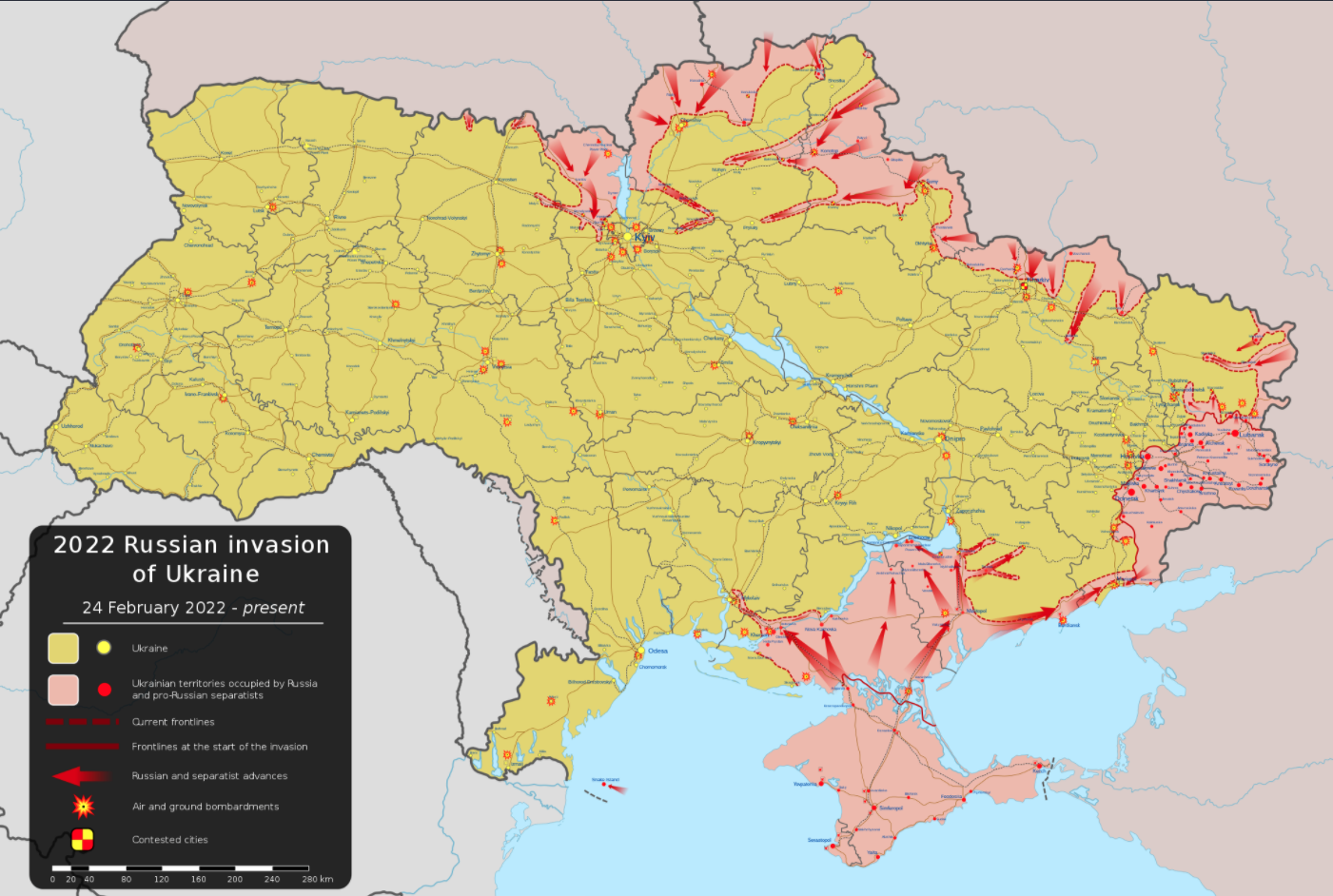A wide range of figures from Ukrainian President Volodymyr Zelenskyy to Senator Adam Kinzigner (R-IL) have advocated for the use of a no-fly zone in Ukraine since Russia’s invasion began on February 24. The idea largely seems to be put forward as a way to impose costs on the invading Russian forces without putting “boots on the ground.” However, there is limited awareness about what the policy would entail, leading to many articles clarifying how dangerous such a move could be.
What Is a No-Fly Zone?
A no-fly zone (NFZ), also known as an air exclusion zone, is a defined area or territory where the airspace is restricted by an enforcing party. That means only specific aircraft would be permitted to fly. The enforcement of such a zone requires not just engagement of trespassing aircraft but also elimination of threats to the aircraft of the enforcing party. This means engaging with ground forces both in and potentially adjacent to the NFZ itself.
Please check your email for instructions to ensure that the newsletter arrives in your inbox tomorrow.
Where Have No-Fly Zones Been Used in the Past?
NFZs are a relatively new concept, first introduced in the 1990s. They have since been used in a military context on a number of occasions:
- Iraq: From 1991 until 2003, the U.S. and other members of the Coalition of the Gulf War enforced two NFZs in Iraq against Saddam Hussein, one to prevent attacks against Kurdish civilians in the north and another to protect Iraq’s Shia population in the south.

- Bosnia and Herzegovina: Between 1993 and 1995, twelve NATO countries enforced an NFZ over Bosnia and provided close air support to UN troops in Bosnia. In total, NATO pilots flew over 100,000 sorties against forces from Serbia and representing Republika Srpska.
- Libya: As part of a NATO-led coalition to intervene against “current attacks against civilians” and potential crimes against humanity by the forces of Muammar Gaddafi, an NFZ was imposed by a NATO-led coalition over much of Libya.
In all three scenarios, the enforcing party (coalitions in all cases) had a significant military advantage and the targeted state was a non-nuclear power. The result was largely immediate air dominance for the enforcer and limited risk for the enforcing party.
What Would a No-Fly Zone Mean in Ukraine?
To the surprise of many, Russia has not yet clearly established air dominance within Ukraine, as evidenced by Ukraine’s successful strikes by TB-2 Bayraktar drones, continued sorties by Ukrainian manned aircraft, and the continued operation of Ukrainian air defense systems. However, Russia wields significant air capabilities; its air force alone possesses over 1,100 combat capable aircraft and over 800 helicopters, according to recent figures. Proponents argue that establishing an NFZ would eliminate a significant Russian advantage and hasten an end to the conflict.
However, this intention ignores the confrontational nature of an NFZ. Because such a zone would require enforcement, it would mean the enforcer, most likely NATO, would have to directly engage with and destroy Russian aircraft as well as Russian air defense systems. To maintain such a zone, NATO would also have to eliminate nearby threats to enforcing aircraft, such as Russian air defense systems across the Russian border. All such activities could precipitate a full-on conflict with Russia.
What sets this case apart from historical examples is that the targeted state, Russia, is a nuclear-armed power. Any escalation of a conflict between the U.S. or NATO and Russia would amount to conflict between nuclear-armed opponents. In the post-World War II era, the potential for armed conflict between the U.S. and European allies and Russia/the USSR has been attenuated by nuclear deterrence — the idea that nuclear weapons pose such a threat through mutually assured destruction that nuclear-armed states will refrain from fighting one another. In short, the use of an NFZ would open the door to nuclear conflict.
This point has been reiterated forcefully by the media and policy experts in the last week. The Biden administration has flatly declared that such a policy is not on the table. This clear and consistent messaging is meant to avoid any potential for escalation between Russia and the U.S., particularly in light of Putin placing Russia’s nuclear forces on alert.
Please check your email for instructions to ensure that the newsletter arrives in your inbox tomorrow.
Additional Reading
Left
“Calls grow for a no-fly zone over Ukraine. Here’s what it would mean.” – Washington Post
Center
“The Dangerous Allure of a No-Fly Zone” – War on the Rocks
Right
“At Least They’re Saying No To No-Fly Zones” – The American Conservative

